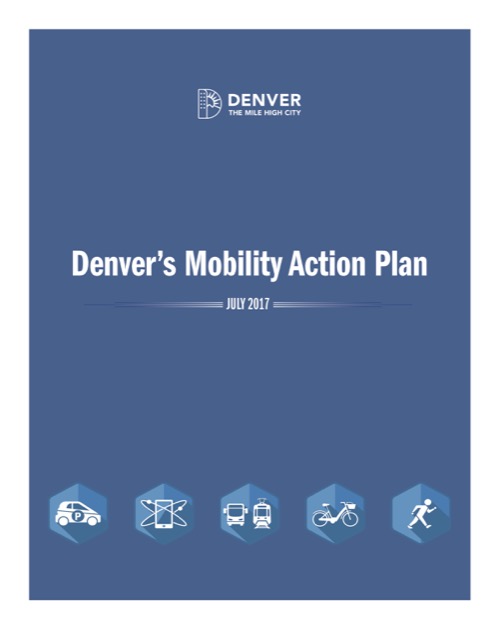Denver’s Mayor Michael Hancock has issued what he calls a Mobility Plan. But if carried out, it will actually reduce the mobility of the residents of America’s nineteenth-largest city. Instead of doing anything to relieve congestion, the number one listed goal of the plan is to increase the share of commuters walking, cycling, or taking transit to work to 30 percent. Such a 146-percent increase over the current 12.2 percent is unattainable, so the plan ends up devoting most of the city’s transportation funds to forms of transportation that are either insignificant or obsolete.
 Click image to download a 5.5-MB PDF of this plan.
Click image to download a 5.5-MB PDF of this plan.
The centerpiece of the Mayor’s plan is dedicated bus lanes on Colfax, Denver’s most important east-west street. Currently, buses carry about 22,000 people a day, more than any other corridor in Denver. But, as the Antiplanner noted recently, dedicated bus lanes can move than many people per hour, and even the 50,000 people per day that the city optimistically projects for Colfax isn’t enough to justify dedicating that much street space to buses. Continue reading







